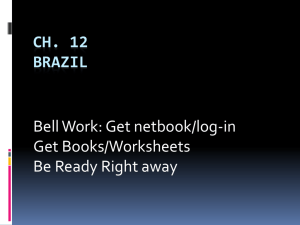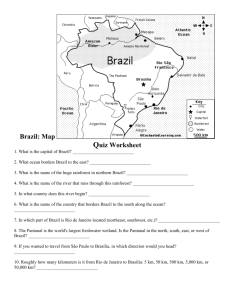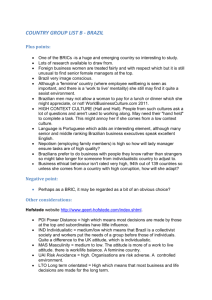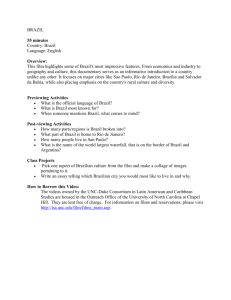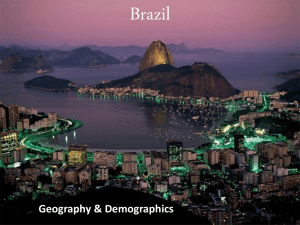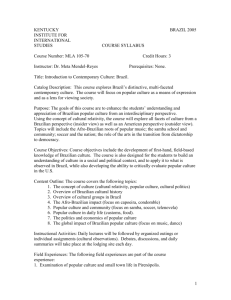Brazil and its Regions
advertisement
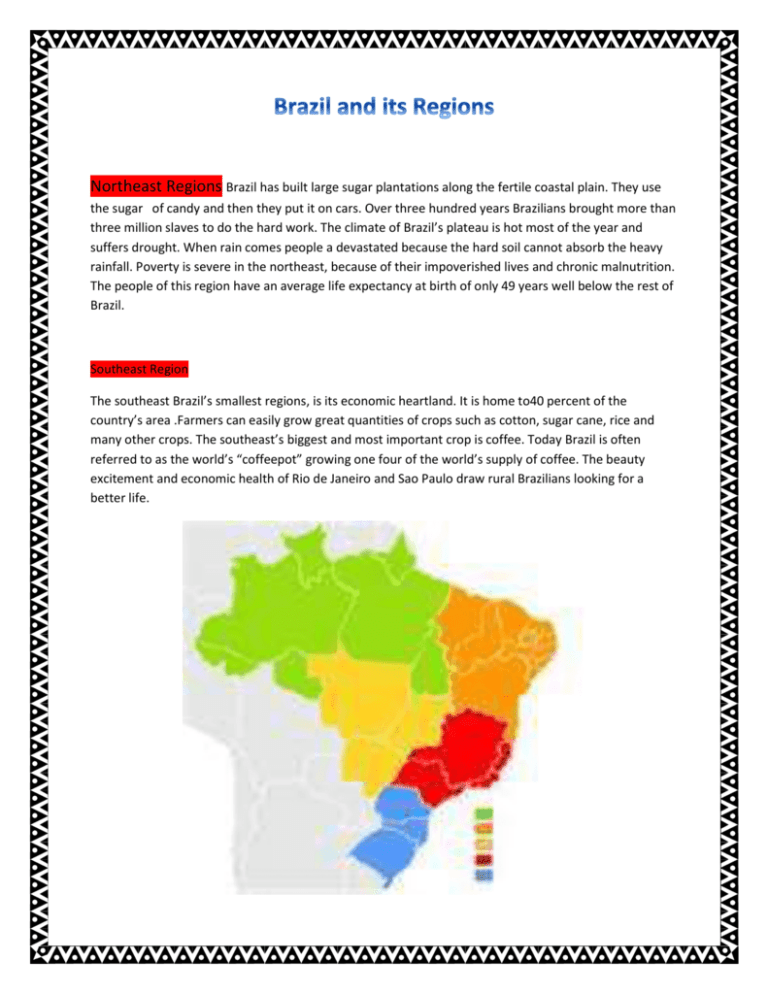
Northeast Regions Brazil has built large sugar plantations along the fertile coastal plain. They use the sugar of candy and then they put it on cars. Over three hundred years Brazilians brought more than three million slaves to do the hard work. The climate of Brazil’s plateau is hot most of the year and suffers drought. When rain comes people a devastated because the hard soil cannot absorb the heavy rainfall. Poverty is severe in the northeast, because of their impoverished lives and chronic malnutrition. The people of this region have an average life expectancy at birth of only 49 years well below the rest of Brazil. Southeast Region The southeast Brazil’s smallest regions, is its economic heartland. It is home to40 percent of the country’s area .Farmers can easily grow great quantities of crops such as cotton, sugar cane, rice and many other crops. The southeast’s biggest and most important crop is coffee. Today Brazil is often referred to as the world’s “coffeepot” growing one four of the world’s supply of coffee. The beauty excitement and economic health of Rio de Janeiro and Sao Paulo draw rural Brazilians looking for a better life. Brazilian Highlands North of Brazilian Highlands, the geographic heart of Brazil on the country’s central plateau. Brazil’s capital ,Brasilia is located in the Highlands, far from the country’s other large cities. From the country’s other large cities. For years overcrowded Rio de Janeiro, was the capital of Brazil. In, 1956 hoping to boost development of the interior and national government decided to build a new capital city 600 miles inland. In 1960 Brasilia was in the mid -1990s had a population of about 1.8 million.

